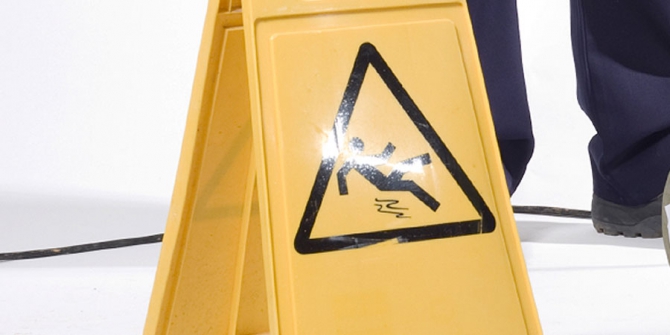The Health and Safety Executive defines a lone worker as a person ‘who works by themselves without close or direct supervision’. They are employed in most sectors of the economy such as security, healthcare and transport – and according to the Office of National Statistics there are three to four million lone workers in the UK. Considering the number of lone workers, there’s limited information on the nature of their jobs, and the lack of information has led to a poor understanding and misconception surrounding lone worker safety and status. This article dispels seven common myths about lone working, and sheds light on this growing section of the UK workforce.
1. Lone working is illegal
A common misconception is that lone working is illegal, and that employers are not fulfilling their legal obligations by allowing people to work alone. This is in fact false. It is legal, and in most cases perfectly safe to work alone, however an employer must consider and deal with any health and safety issues prior to the employee commencing their duties.
2. There is no legislation covering lone workers
There is no legislation that specifically covers lone workers, but this doesn’t mean that they operate outside of the law. The following legislation is in place to ensure that employers, including lone workers, consider the safety of their employees.
· Health and Safety at Work Act 1974
· Safety Representatives and Safety Committees Regulations 1977
· The Health and Safety (First Aid) Regulations 1981
· The Workplace (Health, Safety and Welfare) Regulations 1992
· The Reporting of Injuries, Diseases and Dangerous Occurrences Regulations 1995
· The Management of Health and Safety at Work Regulations 1999
· Corporate Manslaughter and Corporate Homicide Act 2007
3. The only risk associated with lone working is violence
Home workers such as social workers and health visitors are at risk of violence during their daily working lives. This is indisputable and a real concern for people in homeworking professions, but there are two other large groups of lone workers: those that work onsite and people who work away from base. Both these groups tend not to work with the public, and as a consequence violence is not the main threat to them - but they are at risk from the machinery they use or are unable to call for help in the event of emergencies.
4. Lone workers don’t need specific training
The danger of grouping all workers under the same health and safety guidelines is that they don’t cater for sections of the workforce, like lone workers, who operate in a distinct way and consequently face different risks. Lone workers should be risk assessed independently of the main workforce, with specific dangers identified and tailored training provided to minimise the specific threats to lone worker safety.
5. Lone worker devices will solve the problem entirely.
Lone worker protection systems are a highly effective means of helping workers call for help. They help to save lives and protect the workforce, but they are reactive and should not be considered as the sole solution to the risks posed by working alone.
6. You’re ok if you have risk assessment in place
Paperwork doesn’t save lives. A risk assessment is only the beginning of the process, as your success will be measured on how a business manages to control the identified risks through effective employee communication, purchasing the most appropriate lone worker system for your business, and ensuring adequate training is given.
7. Lone workers are people who work in isolated and remote areas
Lone workers do work in isolated and remote areas. They also work in densely populated urban areas, and may even have regular interaction with the public, such as delivery workers or home workers. They can work in warehouses surrounded by people, but have no direct supervision and are therefore still classified as lone workers. Equally they can work alone at night as security guards, and be at risk of violence or abuse. Lone workers are everywhere, working on their own in very different environments.
Lone working is becoming increasingly common in the UK as companies strive for greater efficiency and improvements in technology enable workers to operate alone. As the number of lone workers increases, it’s becoming increasingly important to ensure that robust health and safety procedures are in place and that lone worker systems are deployed. For more information on protecting your lone workers, and advice on the best lone worker systems, contact LONEALERT.







